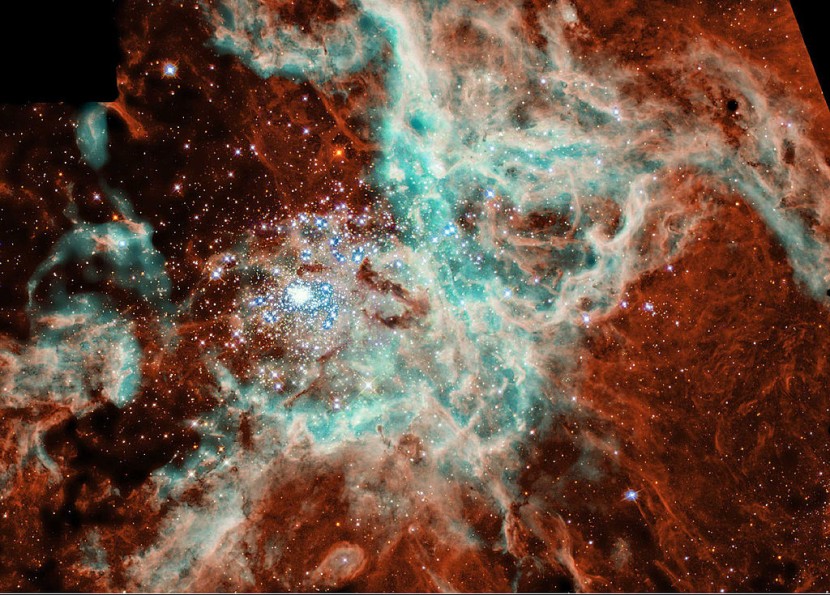Two NASA telescopes joined forces to capture images of what astronomers are calling a "Christmas Tree Cluster" of stars within the Milky Way galaxy.
The object is scientifically called NGC 2264 and is a formation of young stars, some larger than our solar system's sun. They are estimated to be aged between one and five million years. The space agency said that the star cluster is located within our galaxy, roughly 2,500 light-years away from our planet.
Christmas Tree Cluster

In a post on X, formerly known as Twitter, NASA joked about the cluster, saying it was "beginning to look a lot like cosmos." A composite image of the Christmas Tree Cluster makes it look like a festive holiday decoration.
It is seen with a bright green glow and what looks to be blue and white sparkling lights. However, instead of having pine needles and string lights, NGC 2264's green glow is gas and the blue and white sparkles are young stars emitting X-rays, as per CBS News.
The space agency announced the newly captured images only a few weeks after the James Webb Space Telescope and Hubble Space Telescope revealed their holiday discovery. This was what astronomers dubbed a "Christmas Tree Galaxy Cluster" located roughly 4.3 billion light-years away from our planet.
One of the study's authors, astronomer Haojing Yan, said that the galaxy cluster is known as MACS0416 and gave it its nickname due to its colorful and flickering lights. The cluster image is one of our universe's "unprecedented" deep views and includes a visual of an ancient star known as "Mothra."
The white stars shining throughout the latest image were revealed by observations conducted in infrared light with the Two Micron All Sky Survey. It operated between 1997 and 2001. Studies of young stars provide insight into these cosmic bodies' volatile nature.
Young stars are known to be capable of releasing powerful flares that are stronger than those that our sun releases and astronomers are investigating these phenomena. According to CNN, Hubble had to look a little farther to find a celestial winter wonderland.
Distant Stars in the Universe
The telescope was able to observe the billion stars that sparkle within a dwarf galaxy known as UGC 8091, which is found roughly 7 billion light-years away from our planet within the Virgo constellation.
That galactic arrangement of stars made it look like tangled strings of lights hastily put away at the end of a holiday season. The chaos in the formation results from UGH 8091 being an irregular galaxy that lacks the structured appearance of a spiral or elliptical galaxy.
Yan said that observing an individual star in a faraway galaxy is a big deal, comparing it to a "miracle." While the latest finding is not the first time distant stars have been detected, they have become increasingly more common with the help of James Webb, said the New York Times.
© 2025 HNGN, All rights reserved. Do not reproduce without permission.








